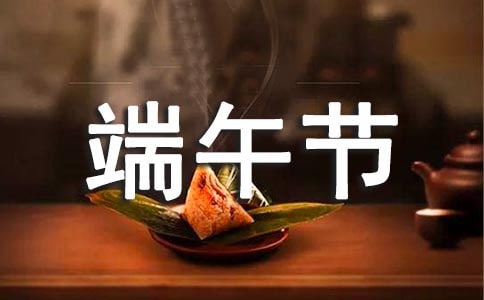端午节的来历传说
源于纪念屈原

公元前278年,秦军攻破楚国京都。屈原眼看自己的祖国被侵略,心如刀割,但是始终不忍舍弃自己的祖国,于五月五日,在写下了绝笔作《怀沙》之后,抱石投汨罗江身死,以自己的生命谱写了一曲壮丽的爱国主义乐章。传说屈原死后,楚国百姓哀痛异常,纷纷涌到汨罗江边去凭吊屈原。渔夫们划起船只,在江上来回打捞他的真身。有位渔夫拿出为屈原准备的饭团、鸡蛋等食物,“扑通、扑通”地丢进江里,说是让鱼龙虾蟹吃饱了,就不会去咬屈大夫的身体了。人们见后纷纷仿效。一位老医师则拿来一坛雄黄酒倒进江里,说是要药晕蛟龙水兽,以免伤害屈大夫。后来为怕饭团为蛟龙所食,人们想出用楝树叶包饭,外缠彩丝,发展成棕子。
以后,在每年的五月初五,就有了龙舟竞渡、吃粽子、喝雄黄酒的风俗;以此来纪念爱国诗人屈原
源于纪念伍子胥
端午节的第二个传说,在江浙一带流传很广,是纪念春秋时期(公元前770--前476年)的伍子胥。伍子胥名员,楚国人,父兄均为楚王所杀,后来子胥弃暗投明,奔向吴国,助吴伐楚,五战而入楚都郢城。当时楚平王已死,子胥掘墓鞭尸三百,以报杀父兄之仇。吴王阖庐死后,其子夫差继位,吴军士气高昂,百战百胜,越国大败,越王勾践请和,夫差许之。子胥建议,应彻底消灭越国,夫差不听,吴国大宰,受越国贿赂,谗言陷害子胥,夫差信之,赐子胥宝剑,子胥以此死。子胥本为忠良,视死如归,在死前对邻舍人说:“我死后,将我眼睛挖出悬挂在吴京之东门上,以看越国-军队入城灭吴”,便自刎而死,夫差闻言大怒,令取子胥之尸体装在皮革里于五月五日投入大江,因此相传端午节亦为纪念伍子胥之日。 源于纪念孝女曹娥
端午节的第三个传说,是为纪念东汉(公元23--220年)孝女曹娥救父投江。曹娥是东汉上虞人,父亲溺于江中,数日不见尸体,当时孝女曹娥年仅十四岁,昼夜沿江号哭。过了十七天,在五月五日也投江,五日后抱出父尸。就此传为神话,继而相传至县府知事,令度尚为之立碑,让他的弟-子邯郸淳作诔辞颂扬。
端午节的习俗
赛龙舟:
賽龙舟,是端午节的主要习俗。相传起源于古时楚国人因舍不得贤臣屈原投江死去,许多人划船追赶拯救。他们争先恐后,追至洞庭湖时不见踪迹。之后每年五月五日划龙舟以纪念之。借划龙舟驱散江中之鱼,以免鱼吃掉屈原的身体。后来,赛龙舟除纪念屈原之外,在各地人们还付予了不同的寓意。此外,划龙舟也先后传入邻国日本、越南等及英国。 端午食粽
端午节吃粽子,这是中国人民的又一传统习俗。粽子,又叫“角黍”、“筒粽”。其由来已久,花样繁多。据记载,早在春秋时期,用菰叶(茭白叶)包黍米成牛角状,称“角黍”;用竹筒装米密封烤熟,称“筒粽”。一直到今天,每年五月初,中国百姓家家都要浸糯米、洗粽叶、包粽子,其花色品种更为繁多。从馅料看,北方多包小枣的北京枣粽;南方则有豆沙、鲜肉、火腿、蛋黄等多种馅料,其中以浙江嘉兴粽子为代表。吃粽子的风俗,千百年来,在中国盛行不衰,而且流传到朝鲜、日本及东南亚诸国。
1
佩香囊:
端午节小孩佩香囊,传说有避邪驱瘟之意,实际是用于襟头点缀装饰。香囊内有朱砂、雄黄、香药,外包以丝布,清香四溢,再以五色丝线弦扣成索,作各种不同形状,结成一串,形形色色,玲珑可爱。
悬艾叶菖蒲:
民谚说:“清明插柳,端午插艾”。在端午节,人们把插艾和菖蒲作为重要内容之一。家家都洒扫庭除,以菖蒲、艾条插于门眉,悬于堂中。并用菖蒲、艾叶、榴花、蒜头、龙船花,制成人形或虎形,称为艾人、艾虎;制成花环、佩饰,美丽芬芳,妇人争相佩戴,用以驱瘴。
艾,又名家艾、艾蒿。它的茎、叶都含有挥发性芳香油。它所产生的奇特芳香,可驱蚊蝇、虫蚁,净化空气。中医学上以艾入药,有理气血、暖子宫、祛寒湿的功能。将艾叶加工成“艾绒”,是灸法治病的重要药材。
菖蒲是多年生水生草本植物,它狭长的叶片也含有挥发性芳香油,是提神通窍、健骨消滞、杀虫灭菌的药物。
可见,古人插艾和菖蒲是有一定防病作用的。端午节也是自古相传的“卫生节”,人们在这一天洒扫庭院,挂艾枝,悬菖蒲,洒雄黄水,饮雄黄酒,激浊除腐,杀菌防病。这些活动也反映了中华民族的优良传统。端午节上山采药,则是我国各国个民族共同的习俗。
2
端午节的来历与传说2017-05-15 18:11 | #2楼
端午节,又称为五五节,因为端午节是在农历的五月五日,是三个重要的中国节庆之一,其它两个分别是中秋节和农历新年。
这个节日的由来是古代中国有一位博学多闻的官吏屈原,他是一位爱民而且又受到尊崇的官吏,但是由于一位充满嫉妒的官吏陷害,从此在朝廷中被皇帝所冷落。由于无法获得皇帝的重视,屈原在忧郁的情况下投汨罗江自尽。
《端午节的来历传说》全文内容当前网页未完全显示,剩余内容请访问下一页查看。
由于对屈原的爱戴,汨罗江畔的居民匆忙的划船在江内寻找屈原,并且将米丢入汨罗江中,以平息汨罗江中的蛟龙。即使他们当时并没有找到屈原,但是他们的行为,直到今天在端午节的时候,仍然被人们传颂纪念着。
Officially on falling on the fifth day of the fifth lunar month, the Dragon Boat Festival is also known as Double Fifth Day. While many stories regarding its origin abound, the most popular and widely accepted version regards Qu Yuan, a minister during the Warring States Period (475 - 221 BC)
Legend of the Dragon Boat Festival's Origin
端午节起源的传说
At the end of the Zhou Dynasty, the area we now know as China had fallen into a state of fragmentation and conflict. While the Zhou dynasty had ruled for several centuries, several other states, originally feudal domains, tried to carve out their own kingdoms. The state of Qin would eventually emerge the victor and unify all of China under one rule for the first time in history。
Qu Yuan served as minister to the Zhou Emperor. A wise and articulate man, he was loved by the common people. He did much to fight against the rampant corruption that plagued the court-- thereby earning the envy and fear of other officials. Therefore, when he urged the emperor to avoid conflict with the Qin Kingdom, the officials pressured the Emperor to have him removed from service. In exile, he traveled, taught and wrote for several years. Hearing that the Zhou had been defeated by the Qin, he fell into despair and threw himself into the Milou River. His last poem reads: Many a heavy sigh I have in my despair, Grieving that I was born in such an unlucky time. I yoked a team of jade dragons to a phoenix chariot, And waited for the wind to come, to sour up on my journey As he was so loved by the people, fishermen rushed out in long boats, beating drums
to scare the fish away, and throwing zong zi into the water to feed braver fish so that they would not eat Qu Yuan's body。
《端午节的来历传说》全文内容当前网页未完全显示,剩余内容请访问下一页查看。
The Modern Dragon Boat Festival
现代端午节
Starting from that time to this day, people commemorate Qu Yuan through Dragon Boat Races, eating zong zi, and several other activities, on the anniversary of his death: the fifth day of the fifth lunar month。 Dragon Boat races are the most exciting part of the festival, drawing crowds of spectators. Dragon Boats are generally brightly painted and decorated canoes. Ranging anywhere from 40 to 100 feet in length, their heads are shaped like open-mouthed dragons, while the sterns end with a scaly tail. Depending on the length, up to 80 rowers can power the boat.
A drummer and flag-catcher stand at the front of the boat. Before a dragon boat enters competition, it must be "brought to life" by painting the eyes in a sacred ceremony. Races can have any number of boats competing, with the winner being the first team to grab a flag at the end of the course. Annual races take place all over China, Hong Kong, Macao, Taiwan, and other overseas Chinese communities。
Zong Zi
粽子
The traditional food for the Dragon Boat Festival, Zong zi is a glutinous rice ball, with a filling, wrapped in corn leaves. The fillings can be egg, beans, dates, fruits, sweet potato, walnuts, mushrooms, meat, or a combination of them. They are generally steamed。
Talisman and Charms
符咒
Another aspect of the Double Fifth Day is the timing: at the beginning of summer, when diseases are likely to strike, people also wear talisman to fend off evil spirits. They may hang the picture of Zhong Kui, guardian against evil spirits, on the door of their homes, as well. Adults may drink Xiong Huang Wine, and children carry fragrant silk pouches, all of which can prevent evil. It is said that if you can balance a raw egg on its end at exactly noon on Double Fifth Day, the rest of the year will be lucky。
【端午节的来历传说】相关文章:
端午节的来历与传说03-26
端午节的来历传说和习俗09-25
端午节的来历传说和习俗01-11
元宵节的来历传说06-19
元宵节的来历传说05-18
元宵节的来历及传说05-18
谷雨节气来历传说简介05-18
元宵节的来历与传说05-18
中秋节的来历及传说12-23
[精]元宵节的来历传说07-22